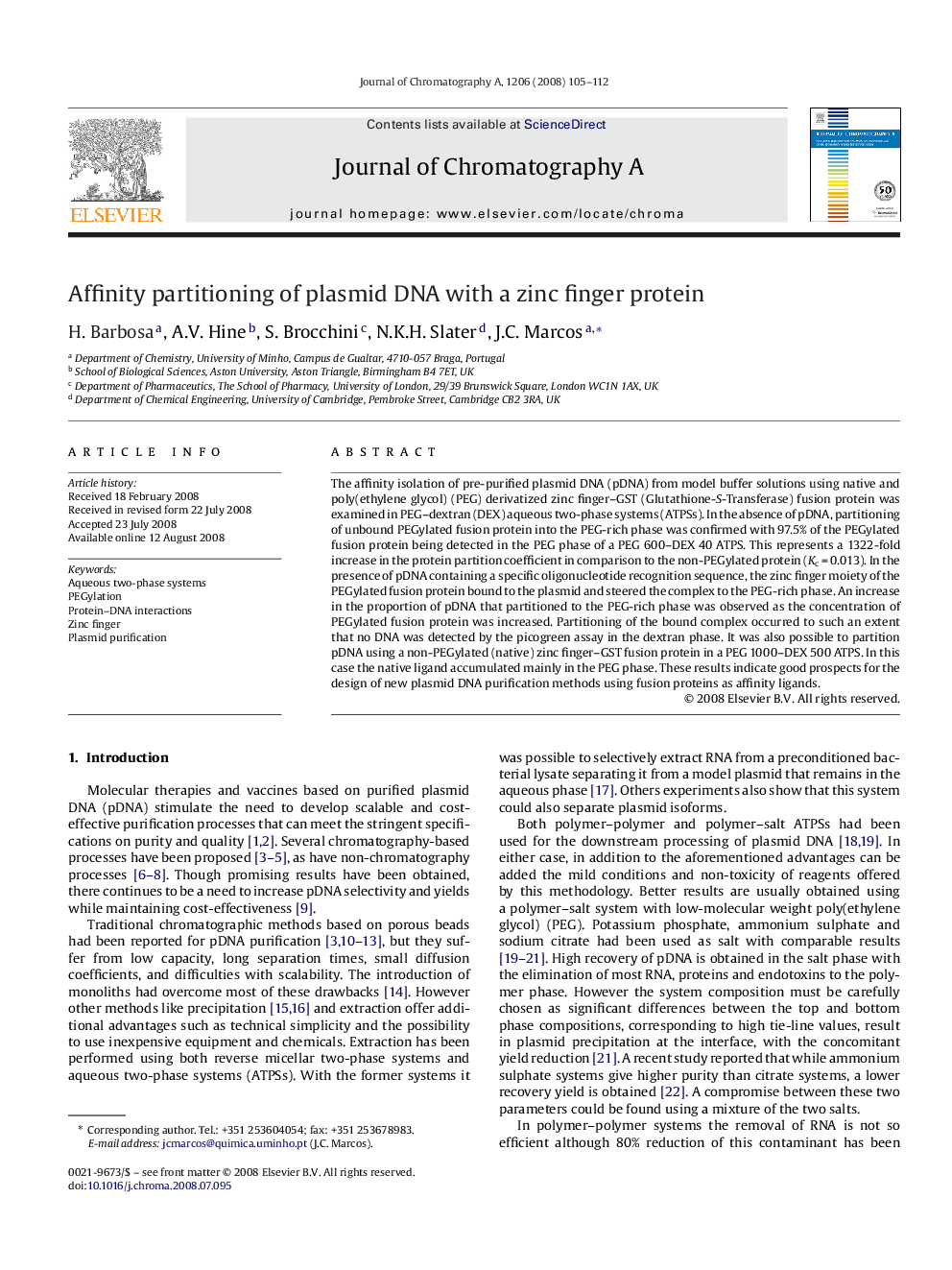| کد مقاله | کد نشریه | سال انتشار | مقاله انگلیسی | نسخه تمام متن |
|---|---|---|---|---|
| 1207353 | 965264 | 2008 | 8 صفحه PDF | دانلود رایگان |

The affinity isolation of pre-purified plasmid DNA (pDNA) from model buffer solutions using native and poly(ethylene glycol) (PEG) derivatized zinc finger–GST (Glutathione-S-Transferase) fusion protein was examined in PEG–dextran (DEX) aqueous two-phase systems (ATPSs). In the absence of pDNA, partitioning of unbound PEGylated fusion protein into the PEG-rich phase was confirmed with 97.5% of the PEGylated fusion protein being detected in the PEG phase of a PEG 600–DEX 40 ATPS. This represents a 1322-fold increase in the protein partition coefficient in comparison to the non-PEGylated protein (Kc = 0.013). In the presence of pDNA containing a specific oligonucleotide recognition sequence, the zinc finger moiety of the PEGylated fusion protein bound to the plasmid and steered the complex to the PEG-rich phase. An increase in the proportion of pDNA that partitioned to the PEG-rich phase was observed as the concentration of PEGylated fusion protein was increased. Partitioning of the bound complex occurred to such an extent that no DNA was detected by the picogreen assay in the dextran phase. It was also possible to partition pDNA using a non-PEGylated (native) zinc finger–GST fusion protein in a PEG 1000–DEX 500 ATPS. In this case the native ligand accumulated mainly in the PEG phase. These results indicate good prospects for the design of new plasmid DNA purification methods using fusion proteins as affinity ligands.
Journal: Journal of Chromatography A - Volume 1206, Issue 2, 10 October 2008, Pages 105–112